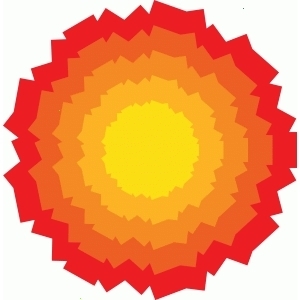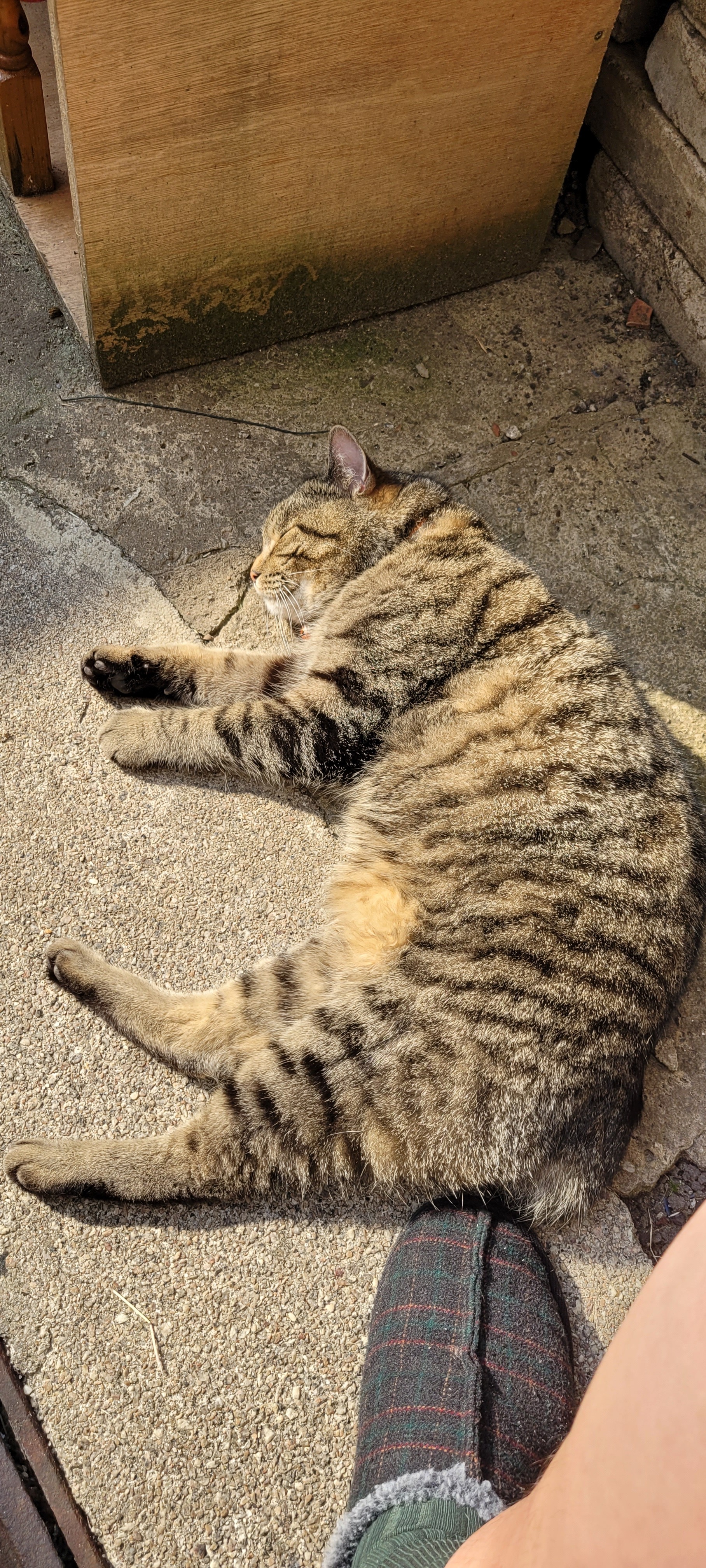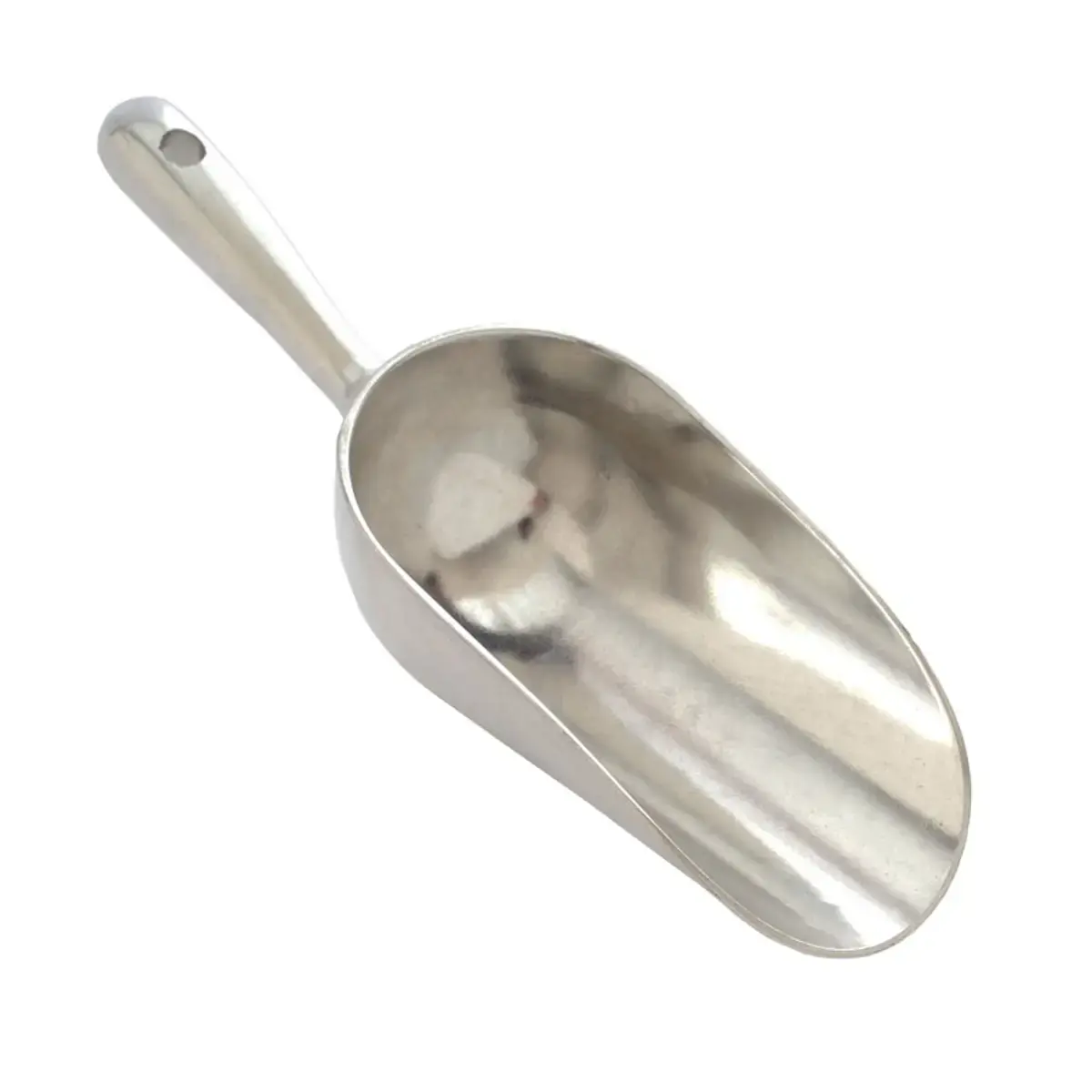Gas stoves fill the air in your home with particulate matter (pm), which has been found to increase cancer risk in the long term.
So next time you buy a stove, consider choosing an induction stove.
Btw, gas stoves being better or faster than induction is a myth. They have certain specific advantages, but they are actually slower.
Obligatory Technology Connections video:
https://www.youtube.com/watch?v=eUywI8YGy0Y
Induction is the best, I’ll never go back
Induction is best in theory, however in practice it’s unfortunately often paired with these shitty buttonless capacitive controls that are harder to decipher that hieroglyphics as well as “”“smart”“” features
They do still sell induction stoves with classic dumb buttons but they are either hard to come buy or aimed at professional chefs, which instantly adds two zeros to their price
Removed by mod
My stove apparently has wifi. But why I would put that thing on my network is beyond me.
wireless house fire
Wifire sounds like a 90s hard drive protocol.
lmao didn’t even think to invert FireWire
Tbf the flat buttonless style makes them really easy to clean.
The interfaces are usually really bad, yes. The technology itself still makes up for this particular shortcoming, but they need to step up their game.
Yeah, I hate the interfaces, but especially the super-loud non-mutable beeps which seem to be common on every model I’ve seen. My two-burner induction setup has analog knobs for temp control, which is awesome, but it stills beep when you turn them, with every single temperature increase. Drives me crazy.
I’ll never go back to gas though. My new apartment came with a gorgeous brand new gas range, and it absolutely sucks compared to my $50 countertop induction.
I have a regular flat top glass stove WITH KNOBS that works with ALL PANS, not just magnetic… then I have a standalone induction unit for when I need to really crank up the heat.
Works a dream!
That one that works with all pans is an electric resistance coil. It’s slow as molasses. But hey, more power to you if you can use it well. I have a standalone induction unit as well and it’s amazing how little I have to use anything else.
It’s slower than induction, but not bad at all for most things! When I’m too lazy to pull out the induction burner and need to boil water, I just use my electric kettle to boil it while heating up a little bit on the stove.
I need to get some more pans that work with my induction burner.
Induction also doesn’t work with aluminum items like a moka pot without an “induction adapter” which is just a steel plate.
Aluminum doesn’t belong anywhere near food. Get a stainless moka pot!
Tell that to my aluminum foil.
It’s the best, got one not too long ago, and same, I’ll never go back. Immediate temperature control.
I mean, you have immediate temp control with gas too?
It’s significantly immediate-er with induction - particularly going from cool to hot. Boil water in 2 minutes and handles don’t get hot in the process. And since nothing is heating except the metal of the base of the pan there is no residual heat from the cooktop parts or the sides of the pan when you turn it off. The temperature drops much faster.
I went back to gas after 5 years cooking on induction and miss it a lot. Cooking something like pasta that requires boiling a sizeable quantity of water takes 2x or 3x longer on gas, even with a very powerful burner.
Not quite as immediate! You’d be surprised at the difference
They probably had a non-induction electric stovetop before.
Yes, but we’re talking gas vs induction, right?
Right, so it’s the same but without the cancer and explosions.
But without electrocutions 😋
Interesting.
Now let’s see that beautiful, clean coal.
With free cancer!
Don’t forget your aluminium hat against the 3G
This guy thinks science is a conspiracy lmao
Show me the study.
You seriously just asked me to go find you proof of something heavily tested and demonstrated as fact? Bahahaha. Go waste someone else’s time 🤡
You were making good points, what happened?
Well show me the study, I mean people all over the world uses highly reglemented gas stoves for not very much time a day and we’re not getting cancer ftom it I bet. I do bet a plastic TV might emanating more dangerous crap for example. Or breathing in a city.
Last “study” I read about gas stoves, it was a crap study too but even they said there is no danger whatsoever, except if you like use it in a non at all ventilated space. => Some website took it and ran with it “gas stoves could cause cancer!1!”. And here we are. It’s like that fake story sbout vaccines & autism.
We have gas heaters for water, sure if you don’t have any ventilation then thats bad, but if your electric setup is bad, induction won’t save that either?
I should probably get off the internet for today 😋 go boil me a slow cup of tea ^^
Cheers & thanks warbond
I’ve never seen a gas stove with temp control. I’m not even sure how that would work. Controlling the amount of gas, sure, but not the temperature. In an induction stove, you can set it to 150 degrees, and it will hold that.
deleted by creator
Ouch
I cannot wait to finish uni and move to a place without a gas stove. The thing is they renoveated the kitchen just before I moved in but they decided to put in a gas stove for whatever reason.
The studies I read, there was no ventilation / exhaust fan. The point was that low income households using these stoves often don’t have proper ventilation and it makes them dangerous. I didn’t find much evidence that using them with proper ventilation is actually a serious problem.
Further, cooking releases all sorts of chemicals from incomplete combustion in the air if something is burning, as well as the toxic chemicals release from nonstick cookware at very high temperatures, so cooking without ventilation is bad for your health would be the message I’d take away. I find most people are completely unaware of the hazard.
With proper ventilation you can do everything, you can work with hazardous gases and nuclear materials, if the ventilation is sufficient.
Radiation ventilation is fun to say
Radioactive particles perhaps but nuclear radiation is not affected by airflow
But if the flow is good enough, all the material will be sucked away before it has time to emit.
Considering how dense radioactive materials typically are (i.e. not likely to disperse in the air as a powder under typical working conditions) you’re talking about some hyperbolic extraction fan there :)
Very few residences have proper ventilation. In the US, a microwave above the stove is common. Microwave often do have a fan function, but the vast majority don’t vent outdoors. I doubt that running air through a very thin filter will do much good.
I hate this. I think it should be illegal. Or make a building code that there has to be a real extractor hood above the stove in all cases.
Even charcoal grills inside are fine with proper ventilation. So you’re right, but your also not saying very much.
Yeah I’m not sure what the purpose of the comment was. To convince people to continue using gas on the off chance it won’t increase cancer risk? That’s not a compelling reason to use gas. It might not kill me.
I’m pretty sure the comment was to emphasize the importance of a proper working stove hood.
it also emphasizes the importance of knowing how the items built into your house work.
I’m not even sure I would call it “low income households”, more like “older building/houses”. Plenty of expensive apartment units are in old buildings (I’m looking at you NYC) without proper ventilation.
I own a unit in a co-op in a building that is over 100 years old. I have a gas stove. There is a vent on my above-range microwave but it’s just a filter that blows it back into the room. I do a lot of cooking. I’m in danger.
Indeed. Charcoal filters are to catch some odours, the aluminum will catch some grease, but ‘natural gas’ is a whole lot more than methane, and think the same is true for propane.
Thanks for the clarification.
Gas stoves without extraction are also a lot more likely to use a liquefied gas fuel (i.e. bottled butane/propane) rather than a plumbed in utility gas mains (typically methane) which makes a big difference in particulate emissions during combustion
the maillard reaction causes cancer. I’m still not boiling my beef.
Photons cause cancer so I guess I may as well do nothing at all.
I mean photon is a pretty broad category so I’m not sure if you’re saying that gamma rays cause cancer or 5g does.
The few times I have prepared meat while trying to minimize the maillard reaction, it was still quite tasty.
That said, I agree that cancer risk is relative, and you can’t avoid all risk, even if you are happy to try.
I hear sous vide steak can be quite tasty.
I hear sous vide steak can be quite tasty.
It is the best way to prepare steak, but you still need to sear it afterwards. The steak can be cooked to a perfect medium-rare all the way through… But you still need to throw it on an ultra hot skillet with some butter and rosemary afterwards, to add the crust to the outside.
This is the way
The information I have says sous vide is not as good as a “standard” reverse sear in an oven. But, I haven’t tried either.
My experience is that the “crust” on meat is entirely optional, and while I don’t aggressively avoid it, I don’t seek it out when I am preparing my own meat.
I have tried both, and can confirm that sous vide is superior. With a traditional oven prep, you get a pink rare center and brown medium-well outer edge. With sous vide, you get a perfect light pink medium rare all the way through, with only a thin edge of brown from the sear. With sous vide, you just sort of roll it across the skillet on the way to the plate, to get that crust but avoid cooking the interior more.
But to be clear, if you skip the sear with sous vide, your steak will be pink. You’ll miss out on a lot of flavor and mouthfeel from the sear. Sous vide technically cooks the meat, but doesn’t cause any browning (at least, not when cooking it to medium rare) because there isn’t enough heat to cause the Maillard reaction.
Since the Maillard reaction and all its VOCs are the most likely source of meat-related cancer risk, I will gladly eat pink (but safely cooked) meat. In fact the center pink bits are my favorite parts a traditionally cooked steak / prime rib.
You can also minimize the maillard reaction by not eating meat. Just putting it out there.
Oh, my primary diet is beans, quinoa, nooch, and almond milk. Snacking is popcorn with, evoo, and Kernel Seasonings ™.
I still eat meat not infrequently, but not everyday, and I rarely prepare it for myself. Still, I should avoid it more. It’s unnecessary, and even just a couple of years ago, I ate it less of it.
The food I cook for my family does involve the maillard reaction for some of it (salmon patties, roasted veg, french fries, lasagna, pasta w/ meat sauce). I pressure cook the chicken and rice, so I think that mostly avoids maillard. I only eat on the family food to clean it out of the fridge when I don’t think it’s worth serving to anyone else.
Thank you for your concern.
Appliance repairman here. What I tell my clients about gas in general is that: 1. When natural gas burns it create CO. 2. There is a none zero chance the thing can blow up.
Electric cooking appliances have an absolute zero chance of either of these two things happening.
I try to get people to switch to electric for these reasons some just like the aesthetic of cooking on gas.
a non-zero* chance
In my third world country the real issue is about costs. At this very moment cooking with gas is cheaper than cooking with electric.
The gas provider company mandates an inspection on every home gas apppliance and the installation every 5 years to check for good connections and correct ventilation (if a home does not pass the checks the service is suspended), so I guess at least it diminishes the risks to some degree.
But still since gas is going to be a lot expensive in the following weeks, maybe the tables will turn. But then you’ll need to get an electric stove.
Vent your home as much as possible when cooking, that should help with the health risks.
Maybe you can get a small induction stove like this to use the gas stove less

Those things suck at keeping a small volume of liquid at a simmer. I always burn my rice on mine.
Fantastic for boiling huge pots of water or searing things, though
C02 isnt the only dangerous chemical.
And most peoples electricity generates huge amounts of GHGs
Just pointing out the person you replied to said CO which is carbon monoxide, not CO2
The lack of formatting in their comment was confusing.
That said, you’re right that CO (or CO2) aren’t the only harmful outputs of combustion.
- It creates CO.
- Boom.
They didn’t say CO2. They said “1. CO. 2. Boom”
yeah blah blah blah but honestly… we are humans, we do crazy shit daily like driving 200 kph in a metal can while blasting rave or metal music. If something goes out in flames just say that new years eve came in early - if you are still alive. Life isn’t for the faint of heart for sure
I’m guessing that you’re around 20 and a huge fan of anime.
I hate anime but I enjoyed mad max fury road. It lets you appreciate innate insanity of surviving as a human that’s only temporarily suppressed by advanced civilization goodies. 9 meals away my friend, 9 meals away
Humans are fundamentally crazy and I love it. We detonate massive amounts of explosives in the sky once a year?? for some reason, just cause we can. 12:00 at new years eve is the essence of humanity. Louder, brighter, higher, make it visible from the cosmos
We invented nukes for some reason which crazily is a fundament of global peace. WTF
There are no crazier motherfuckers in Milky Way I bet my car on that
Humanity is a self-aware cosmic accident that tamed fire, split atoms, and hurls metal into the void—all while debating the ethics of imaginary beings and detonating fireworks to commemorate the arbitrary. We engineered peace through the perpetual threat of annihilation, invented gods and governments to impose order, then defied both for the thrill of rebellion. At midnight, we scream into the abyss, our cities pulsing like dying stars, not out of necessity but sheer, unrelenting audacity. If the universe watches, it does so in stunned silence.
See… Can do it to.
Yeah and better, I didn’t feel like putting the work. Great words right there.
Humanity fucking rocks, lets shoot some shit
I absolutely hate that I have a gas stove and water heater mainly for reason 2. It fills me with pure anxiety.
I know there’s a relatively small chance, but whenever we’re turning the corner and I see the house is still there it’s a huge relief. In the next year or two we should be able to put out the money to put in outlets and get rid of gas.
I do almost everything in my house but the 2 things I won’t touch are electric and gas.
heatpump water heaters are looking good. Super easy to install. No venting needed and they run on 120v.
I love my heat pump water heater because it cools down the room it’s in to root cellar temperatures perfect for storing things like potatoes and pumpkins
I wanted to comply this data specifically for you. I found the data myself but had GPT formatted for me because I’m lazy. It looks like they’re actually more deaths with electric equipment than there is with gas but I’m guessing that’s because there’s more electric appliances than gas appliances. Even so the data speaks for itself there is no significant safety Factor associated with gas versus electric in terms of explosions or fire hazards. The only significant differences is that gas produces more harmful chemicals when it’s burned
Gas and electric appliances both pose fire and explosion risks, though in different ways.
Gas Appliances (Stoves, Furnaces, Water Heaters):
Fire Incidents: 44,210 home fires annually from heating equipment (NFPA).
Explosions: 23 gas-related home explosion deaths in 2023, the deadliest year in two decades (PHMSA).
Health Risks: Emissions of carbon monoxide and nitrogen oxides contribute to respiratory and cardiovascular diseases.
Electric Appliances (Stoves, Furnaces, Water Heaters):
Fire Incidents: 51,000 electrical fires yearly, causing ~500 deaths, 1,400 injuries, and $1.3 billion in damages (ESFI).
Recent Recalls:
LG (2025): 500,000 ovens recalled due to fire hazard (28 fires, injuries, pet fatalities).
Samsung (2024): 1 million electric ranges recalled due to fire risk (250 fires, 40 injuries).
Both require proper maintenance and safety precautions, but gas carries additional explosion and health risks, while electric fires are often linked to faulty wiring and design flaws.
I haven’t met an electric stove I like cooking on as much as gas. I’m willing to give induction a try, but I’m not dropping three grand on a stove and another grand to get a 240V line run to my kitchen just to find out the damn thing burns my marinara like every other electric stove and the induction hot plate I have with pulse-widths measured in seconds.
My ideal stove would be induction, but it would be on one end of a long, thick sheet of stainless steel. There’d be a thermometer embedded in it, and if I wanted a proper low heat I could just move the pot the cooler part of the stovetop.
Yes, the entire thing would be blisteringly hot, but I could get a nice, even heat and use any pot I wanted.
Or I want an induction stove with remote temperature sensors and magnetic stirrers like in lab equipment so it knows how hot the pot is and can adjust accordingly, instead of just turning on and off at five second intervals.
We like to see it - fire, heat.
We like using pans that may not be induction friendly.
Did you know that the vast majority of electric stovetops aren’t induction stovetops and you can use any pan you like on them? Personally, I would rather not breathe in carbon monoxide.
I prefer gas to electric.
More power to you, as long as you’re cool with the inherent damage to your health.
Ceramic stoves also work on other types of pans and emit a bright red glow when they’re hot. However, they are less efficient.
They are ass for trying to control the temperature of your pan.
Of all the stoves I’ve cooked on, ceramic stoves are the worst. No temperature control and anything that spills is instantly burned into the stovetop unless you want to spend your weekend scrubbing it out.
Regular old coil electric stoves will be fine with, for instance, your old rough-bottomed cast iron pan. And despite no flame, the coils glow red hot like a horseshoe at a blacksmith’s, to hit that emotional spot.
There is a little learning curve: they heat up and cool down more slowly, which can be a plus if you work with it.
Note: If you have spilled, especially grease, be sure to lift the whole stovetop to clean underneath, nobody taught me that at first.
Cast iron works great on induction though.
If it’s flat enough to connect. My pan has a raised 16 inch outer ring, well outside the induction area, and about a 2 inch diameter circle in the middle that touches the glass. No contact, no induction.
Oof. Take it to a machine shop and grind it down?
Electric coil stoves are garbage. Induction is very good.
If you can afford them. And afford to replace old pots that don’t induct. For instance, cast iron is supposed to work, but my beloved old 16" cast iron murder weapon has a very uneven base so it barely connected and didn’t work at all.
I will agree that new coil stoves are the low end of the line, so the oven will be more cheaply made as well.
You like using cheap aluminum pans?
I like my carbon steel and my grandma’s cast iron.
Both of those work on induction perfectly well.
My carbon steel pan works almost too well on induction
Cast iron for sure works and I’m pretty sure carbon steel does, too. If a magnet sticks to it, it works.
We like to see it - fire, heat.
Exact reason why I built a fire in my kitchen. Gives that camping feeling
Instructions weren’t very clear, now my house is burning down. Is there a good way to vent the smoke next time?
I just get a new house after
The best pans are induction-friendly.
I absolutely agree. I’m happy to switch to a new technology as long as it performs at least as well as my current implementation.
I have a few cast iron and carbon steel pans, but most of my cooking vessels are thick copper (not copper inserts, full 3mm or more copper). Copper pans are superior to any other material (unless you prioritize cost) and are sadly incompatible with induction.
Don’t even talk to me about electric element (non induction) stoves, they’re garbage for heat control.
They are garbage for heat control if you use them the same way you would a gas or induction stove. If you learn how to use one, resistive electric stoves cook just fine.
Hard disagree. Try making a sauce which requires high heat, then very low heat. Turning the electric burner down doesn’t immediately reduce heat, it cools off relatively slowly. I guess you could switch to another burner that was preheated to a low temp, assuming you have a free burner while cooking.
I’ve worked for years in several professional kitchens and cook 3 meals a day, 7 days a week from scratch at home. I know how to use the tools in a kitchen, and non-induction electric burners are absolute garbage.
Induction is even better at quick temperature changes then gas is, which really surprised me.
They have certain specific advantages, but they are actually slower.
This entirely depends on the stove. Consumer-lever stoves? Sure, definitely. Commercial stoves? Probably not. Commercial stoves put out 3-4x the BTUs of a high-end consumer stove, and usually can’t be installed in a home because they require significant shielding around them (so you don’t burn a building down) and a very high flow hood. The highest-end Wolf range has a single burner that has a maximum output of 10,000BTU, and costs a whopping $17,000; a fairly basic range top for a commercial kitchen has six burners that can all output 32,000BTU, and costs about $3700. For stir-frying specifically, you can get a single ring wok burners outputting 92,000-125,000BTU starting at about $700 for natural gas (and a helluva lot more if you use LP).
Unfortunately, I can’t find a solid conversion between gas and induction stove capabilities.
Oh, and FWIW - if you live somewhere with an unstable power grid, a natural gas or LP stove will continue to function when the power is out, albeit you’ll need to light it manually. We lose power fairly regularly due to storms–usually only a day at a time, but sometimes as long as 3-4 days–and it would be a real hassle to have all electric appliances when there’s no power.
1 kW is 3412 BTU/h (=BTUs)
Most induction stovetops have a boost function with around 3-4 kW (that’s about 13000 BTUs).
BUT contrary to a gas stove top, almost all of the energy is actually put into the pot instead of the surroundings (only 30-40% of the energy from a gas stove is used to heat the pot). Meaning that a 4 kW induction cooktop should be comparable to a 40’000 BTUs gas stove (single burner).
Okay, good deal. So, in theory, an induction stove that’s 3500W should be approaching the heating ability of a typical commercial range.
Yes, and you can test it pretty easily by just seeing how much faster a pot of water boils on induction, on-par with the boiling times of commercial burners.
Also, in a commercial setting, induction stoves cook just as effectively with less energy which means they don’t put out nearly as much heat to the environment. For a chef, its the difference between working all day in 90-degree spaces to 70-degree AC. I’m an engineer who works on a lot of commercial kitchens (among other things), and our chefs love the electric kitchens we’ve delivered.
When you’re cooking for work, 8+ hours a day, being comfortable while you do it is a major game changer.
The other thing they enjoy is the level of control and consistency - many professional induction ranges will let you control on temperature, which means you can quickly adjust to specific values in order to, say, sear a steak at 500, then finish it at 300 until it hits the desired internal temperature.
4 kW induction cooktop should be comparable to a 40’000 BTUs gas stove (single burner).
So this is 4000 watts? What household circuit can support that?
A random Better Homes and Gardens article clocks a 2000 square ft (185 square meters) home with central air conditioning at nearly 19,000 watts.
https://www.bhg.com/home-improvement/electrical/how-to-check-your-homes-electrical-capacity/
So I think most homes could handle that in general, but I don’t know about specific wiring requirements to handle that kind of power draw from just the kitchen. So do these things require that level of retrofit?
I’ve never had an induction stove, but I grew up with an electric stove - IIRC, it was on a separate fuse from the rest of the kitchen, and it had a weird plug because it needed a different voltage than most other appliances.
I would assume the requirements for an induction stove are more or less the same… Switching from regular electric to induction would probably be easy, but gas to induction would take a lot more work.
Plenty can. Just need a 240v 30a outlet or higher
Which isn’t a thing in the states anyway.
Yes it is? The US very much has 220v for power hungry stuff. Things like ev chargers, central ac units, water heaters, electric clothes dryers, etc. It uses quite the variety of different plugs for the various amperages
Edit: technically its 220v*
That is exactly what I have running to my traditional electric stove and I live in USA.
I’m confused as to why you’re so confident. The US has 3-phase power and homes get 120V from line 1 to the neutral (split-phase). If you use line 1 and 2, you get 240V. More than enough to power an oven. This is the case in every modern residential home in the US because they have a national building code.
Yes, I’m aware that you can do this but there are not readily available outlets throughout a home for this, lol. Yes, let me move my stove or dryer so I can plug my wok induction stove in.
…You do know that an oven needs a dedicated outlet, yes? As in, if you don’t have a 30-50A receptacle in your home, one must be installed in order for you to have an oven. All new builds and most existing buildings have this dedicated outlet.
Edit: I see that you’re using stove and oven separately. I am talking about a range (oven and stovetop combined), since where I live these are most common and “oven” and “stovetop” are roughly interchangeable. Apologies for any confusion.
Idk about my math but most American household circuits require stoves to be on a (220V) dual phase 18 amp circuit. Which should output around 8kW (18A * 220V)
Should be a lot more than 18A. Should be closer to 30A-50A to account for usage. 18A is what a kitchen receptacle would require and is so low that an oven on a 18A breaker would trip constantly. I’m Canadian so I mostly know the CEC but the NEC requirements in the USA are very similar.
I was thinking of a single dual phase outlet. Is it also higher amperage as well as voltage?
I have to correct you (sorry) when you say “dual-phase” because homes in Canada (my country) and the US don’t have dual-phase electricity and haven’t for many, many decades. What you are talking about is called “split-phase” and is actually just a single phase that’s been split using a neutral/return conductor.
To actually answer your question, yes, it’s higher amperage and higher voltage. Every circuit breaker is really just a “tap” into the panel in order to create a parallel circuit at the applied voltage (usually 120V) and whatever amperage the breaker is rated for (after ensuring that you’re using the correct size of breaker, of course).
The main reason why amperage is really important for larger appliances is because the cable used to plug them in (whether that’s by literally plugging it in or by hardwiring it into the panel) needs to be thick enough not to overheat from regular use. When precautions aren’t taken, it’s pretty easy for the cable jacket to melt (happens around 90 degrees C) and for the bare wires to eventually short and/or start a fire.
Obviously, a 18A breaker would prevent this, but it would also prevent you from using the oven.
Thanks for the answer!
Uhhh, tons of people in Europe are on 240V 3 phase power.
My oven is 3100W and that is just fine. 3 phase consumer induction cooktops can easily go that high or higher.
Once my 3 phase charging pole is put in, my car will charge at >10000W on a household circuit.
Here in Italy most houses used to have contacts allowing max 3kW, but nowadays it’s more common to have 4.5kW (with smart utility meters which allow 30% over current for 3 hours).
Still have to be careful if you’re running a washing machine or something like that, but it’s doable.Of course old houses may have insufficiently-sized wires, and that’s another can of worms.
a natural gas or LP stove will continue to function when the power is out
LP camp stoves work without power and are a good backup for an electric stove
Yeah, a coleman (or equivalent) 2 burner camp stove combined with the adapter to use a full size propane tank is super handy. Combine it with a cast iron griddle, and you can functionally replicate a Blackstone for much much cheaper. It’s also way better for high heat cooking if you don’t have a good stove fan that actually vents outside.
Also, sometimes when power goes out, gas does too (it’s still a grid that can fail).
we got a griddle attachment for my weber babyQ so we can take it camping and fry bacon on it. I’ll take that over a coleman any day.
Yeah, I want one of those, too. I think it fits different needs, though. Stove vs grill.
yeah, it basically takes the place of a frying pan. if we want soup or coffee, we’ve still got a one burner camp stove for that. we end up using the grill more tho.
Yeah, I don’t mind electric stoves but I gotta have one large high pressure burner for woks and griddles
My partner won’t let me have one. :( It’s too dangerous since our house is a cedar cabinet, and cedar burns VERY well.
I have a Viking with 15k burners. No shielding needed, but huge upgrades to air exchange and a really powerful hood fan were.
Because it’s a consumer (really a prosumer) stove, that shielding is already built in. You wouldn’t want to install a commercial range in right next to wooden cabinets; it’s assumed that surfaces in commercial kitchens are all going to be non-porous, hard surfaces, usually stainless steel or ceramic.
Oh, and FWIW - if you live somewhere with an unstable power grid, a natural gas or LP stove will continue to function when the power is out, albeit you’ll need to light it manually.
This is only true on the simplest (or older) gas stoves. Most models these days have all sorts of electronics, including features to prevent gas leaks.
I also live in an area with frequent power disruption. We have a backup generator. It is more than enough to power the electronics in our propane gas range, but nowhere near enough to power an electric range.
Mine works when the power is out. The only electrical part is the starter.
Also, I can heat my house (well, keep the temps above freezing) with my gas fireplace. I just have to manually click the pezioh electric starter.
OTOH, when the power is out, I can’t run my stove vent hood, which vents outside and is why I don’t worry much about “particulate matter.” Never seen a non-externally-vented gas stove; I thought they were against code in the US, but whatever. The fireplace is entirely enclosed and sealed, and vented outside; heat circulation is via a fan that runs air around the heat box - which also doesn’t run with power out, making it less efficient. But it still beats having the pipes freeze.
Yes, they exist, as I acknowledged. How old is it? Is it representative of what you’d find at a standard big box retailer?
For it to work, it means the controls must all be manual and mechanical. This is in contrast to the “smart” features that are very common.
Oh, 25 years old, or something? I’ve looked at replacing it with something newer and easier to clean, with electric controls instead of dials, but they’re enormously more expensive and the basic manual dial versions are still available, and cheaper.
I mean, there’s not much to a gas stove. I’ve taken mine completely apart because the peizo starter fried itself. You don’t need more than physical dials to control gas flow, like a water faucet, and a peizo starter. Making them more complex is really silly. Even my in-laws stupid giant, expensive Viking has manual dials and peizo starters, although they only have to turn the dials on and the starters go automatically until they detect that the gas is burning. I have to press my dials to trigger the starter. Even in the Viking, the gas control is still just a valve; as long as there’s gas pressure in the lines, you can manually start it with a match with no electricity. Their’s is about 10 years old.
Funny, though: our fireplaces are reversed. Our gas fireplace is peizo started; their’s you have to manually light with a lighter.
Never seen something like this?
It’s a pain in the butt cause all it does is suck up any smoke and direct it towards your smoke detector.
Nope, not personally. I mean, I have had hoods that just vent into the kitchen, but never on a gas stove; only on cheap electric ones.
I believe they exist, but IME gas stove installation code says it has to vent outside, because of the gas fumes. With electric stoves, installers can get away with just venting into the kitchen, so if something burns you get your smoke alarm.
I roast coffee beans, and I do it by placing a cookie tray on my stove, and put the roaster on that. It is a major PITA, but if I do a dark roast it produces smoke - like real, dark, something’s-burning smoke - and if I don’t have it under the vent it sets the smoke detectors off every time. But under the vent, it just sucks it all out and jets it outside.
This is the first house I’ve owned that has a gas stove, but my in-law’s place has a big Viking in it with, like, 10 burners; it’s a monster, and the hood on that looks like it came from a restaurant. Their’s vents outside, too.
I have no doubt there are places in the US where gas is cheap and even trailer homes have gas stoves and no outside venting, and maybe older homes. I dunno. But every gas stove I’ve personally seen in the US in the past decade has vented outside.
I think there are some municipalities with that in code, but it’s definitely not universal in the US.
https://codes.iccsafe.org/content/IFGC2021P1/chapter-5-chimneys-and-vents
I live in a house with a gas stove that vents into my kitchen.
I definitely hear you about the coffee roasting. I assumed when they said that it smokes that it would just be like thin wisps, and I definitely smoked out my house. I’m not going to do it inside again.
Yeah, our last house had an electric stove and vented into the kitchen. I had to roast out on the deck :-(
i mean ours was built to look that way, but when you open those cabinets above the microwave there’s ducting in there for the vent to get to the roof.
idk - there should be some very clear cancer statistics to back up such a claim between countries like Sweden (<1% gas stoves, all are electric) vs other countries then.
One cause of cancer like this probably won’t be visible on a national scale, too many other factors come into play that will muddy the data
However, it’s not “idk”, the current science on gas stoves being bad for your health is quite clear. Not just cancer, but also for other lung-related issues like asthma: https://www.cancercenter.com/community/blog/2024/09/are-gas-stoves-bad-for-your-health
You’re right - the report they link to here (Table 2 is good) makes that quite clear.
Also, gas stoves increase the risk of asthma.
I read that running an extractor hood mitigates the risk a fair amount. Not completely, but enough that you shouldn’t worry if gas is your only option
Since this article is specifically about pm 2.5, I’m going to chime in and say I have a gas range with no extractor, and the only time my pm2.5 sensor picks anything up is when frying generates smoke and oil aerosols. That’s more a function of cooking temperature than fuel, and my induction hotplate will generate just as much.
CO2? Definitely more with gas. Trace chemicals? Probably more with gas, but all the studies I’ve seen are just about running the cooktop, with no food, in a sealed room. Run the extraction hood or open a window when you cook - it’s not just heat source.
Many people don’t turn the hood on until food itself is creating a lot of vapor because they are usually so noisy. Meaning the hood often helps very little in practice, although in theory you are right.
I’ve turned mine on, even if only on low, as I light the stove since first reading about this, but I think I’m a little more fact-absorbent than most people
Or they have a fan that just redirects the exhaust into the house
My stove has a “hood”/fan that runs through the microwave and into a cabinet and that’s it. What can I do? After reading all this I intend to keep the window open nearby when cooking, and I always have two large air purifiers running in the living room attached to the kitchen.
For a lot of these large scale, epidemiological findings, it’s important to remember that the effects are small enough that you pick them up on a population level over a lifetime. I’d say that if you can, find a way to properly vent your stove outside if you are doing some home improvement. If you are replacing your stove, consider induction instead, and in the meantime, having an air purifier is good. Opening a window is probably also good. Other than that, I wouldn’t be super alarmed. Obviously, if you have little kids or something, you might have a lower tolerance for potential pollution, but it’s good to think about these things in context. Alcohol causes cancer, but everyone still drinks.
Thank you, that is a great answer that helps me both feel better and take steps if necessary. 10/10 would ask again.
Edit: sorry I know this sounds sarcastic but I really am grateful.
We swapped out a gas for induction, it’s amazing to be able to put the temp down below very hot. Also very responsive to power changes, and can wipe clean.
I love my induction hob for all the reasons you mention. It is by far the best hob I’ve used - much better than gas - and I cook a lot. The only slight downside is ensuring you have the right pans, but they’re widely available. My enamelled cast iron casserole pot works a treat.
Yes, but…
Cooking itself also does this. If you are searing or frying that will also release dangerous particulates. Make sure you have and use a vent hood that vents outside the living space when you cook regardless of fuel.
I can say from personal experience of using every kind of home stove, that gas is both the worst and slowest. Boiling water for my morning coffee is fastest on induction, which takes about half the time as resistive or radiant electric, and gas takes nearly three times longer than that.
Though it might just be the american style of burner that directs the flame away from the center of the pan. I’ve not yet tried any other kind.
It probably has to do with the type of burner I’m going to guess.
We’ve had both induction and electric stoves for our whole lives. And the home we recently moved into has a fancy dancy natural gas stove with star shaped burners.
It is night and day compared to anything else we’ve used before, water boils so much faster, I can actually sear a pen full of vegetables now instead of just making them mushy.
Honestly I love it. I just wish the hood wasn’t so shitty and actually had a hood to capture all of the output from the stove.
Check and see if you need to change the filter in the hood.
Oh dear Lord. The hood has a filter???
Yeah, that’s probably fucked up, none of the filters in anything in this house had been changed in years when we got the place. The filter for the furnace was black.
And it’s been over a year since then I’m sure if the hood fan has a filter it’s absolutely disgusting.
But I also meant that the hood could have a shape to it so that it collects air from the front burners which it doesn’t.
Yeah, fam… airborne grease particles. They’re the reason for hood fan filters, and the reason they clog. I would recommend getting a full box of nitrile gloves. And definitely clean the screen cover over the filter.
Edit: re-shaped for collection of fumes from the front burners… Idk, sometimes people change the stove but not the hood, or get a stove and think the hood that would work best with it “clashes” and gets an objectively shit hood instead. Beauty is pain. Or some shit. Idk. I put stones on top of other stones for a living…
You can wash the oil out of metal hood-filters, in the dishwasher.
(Extra: Heat-pump(reverse-cycle) air-conditioner indoor-filters can be removed, and then washed out with water, takes 5 minutes)
I’ve got a gas stove that I love, but my shitty little induction hotplate that I hate for anything other than searing is better at searing. It’ll get a cast iron pan up to 700-800 degrees and my carbon steel gets to like 900, which is perfect for searing.
But the damn thing turns off when I try to toss anything, and it can’t maintain a low temperature because the pulse-width modulation is 1Hz.
deleted by creator
What heat source are you using? In my experience induction about matches electric kettles.
deleted by creator
It’s completely baffling that there are people unironically still defending gas stoves in 2025. There’s no discussion to be had on the subject any more, induction is superior and that’s final.
I would agree in places with good infrastructure. I lived somewhere with rampant power outages, sometimes for 5 days at a time.
Gas was sure nice then.
I think the people who claim gas stoves are best likely grew up either not cooking much, or had a decent gas stove, so their first exposure to an electric stove was super cheap, crappy electric coil stoves in student housing, or wherever they first lived as a young adult. Then when they were able to afford better, they got a better gas stove.
I have a really crappy gas stove, and it makes me yearn for the cheap electric coil stoves of my youth.
People say that gas stoves are more powerful and responsive, when the truth is that more powerful stoves are more powerful, and “responsiveness” is a fake concern. My crappy gas stove takes forever to get a pot of water boiling, especially compared to coil stoves. Yeah, you can turn a gas stove to 100% quickly, but that’s only better if it can put out more power. It won’t heat up any faster than an electric stove if the electric stove takes double the time, but also has double the power. There’s also not many cases where “time to maximum heat” is what you care about, I can’t think of any.
Responsiveness the other way (hot to cool) doesn’t matter when you have a high thermal mass in the pan (or the pan itself has high mass), it only matters when the pan and contents are light, in which case, you just take the pan off the heat.
The way coil stoves cycle their power on and off is incredibly dumb IMO.
Induction cooktops don’t do that, but it blows my mind that it took as long as it did to get a duty cycle frequency somewhere above ‘once every 30 seconds’.
In places where natural gas is cheap and electricity is expensive cost is a factor
When the power goes out in sub zero temperatures, and your heating does too, it helps to be able to make hot water on the stove to warm up.
Otherwise, yeah induction is better.
A $50 dual burner camp stove solves that (or even cheaper, a $12 single burner backpacking stove if you have less space).
While you’re correct in general, in places where the power is out for a week, a camping/backpacking stove would be ill-suited to the task of keeping multiple people warm and fed. Especially in a house and not an apartment.
A gas furnace won’t keep you warm when the power is out, either. I will say a camp stove feeds just as well as a regular stove, after all, how often are you using more than 2 burners simultaneously?
A gas (or wood) stove will, which is why they’re still common in rural areas that face power outages more frequently. Your comment is the first mention of furnaces.
Personally, I use more than 2 burners pretty often. Honestly, it’s a bit of a waste of everyone’s time to debate whether or not a camping stove is a universal replacement for a gas stove since everyone has different needs. For the scenario I described, a gas stove is the better option.
I would be pretty pissed if I had to use a camping stove instead of a gas stove during an outage just because. They’re totally different tools suited for different use cases and environments.
Yes, look at what happened in New Hampshire last winter with an historically extreme cold snap that caused power outages. It was so cold that many cars refused to start. If you were depending on electric heat only, you may very well die, not even able to make it to a neighbors house before dying.
Typically those shouldn’t be used indoors though, right? Usually a gas stove will have ventilation, but no gas stove, then likely not enough ventilation and you’ll need to step outside or crack a window to cook with gas.
My manual says:
DO NOT USE IN CARAVANS, TENTS, MARINE CRAFT, CARS, MOBILE HOMES OR SIMILAR LOCATIONS
So i guess you can use it indoors, but I definitely don’t.
Everything else being equal, of course electric and induction stoves are preferable to gas. I spend most of my life with an electric stove, no apartment I ever saw had induction, but I didn’t particularly like the gas stove I had to use for some years.
But if you want the worst user experience ever, find an electric stove with touchscreen controls. What the hell, landlord, where did you even find that one?
Having only cooked on radiant electric and gas, I gotta say I prefer the experience of cooking on gas, but not by enough to accept the documented risks, even if they are small. I hope at some point I’ll be able to have an induction range top as my primary.
Since this is the stove thread:
I had a pot of salt water overflow from boiling on a electric stove and now there is this tough ring of residue around the burner caked on and it won’t scrub off. Is using a razor blade to scrape it off really the only option?
I’m worried I will scratch the stove top and the landleech will have an excuse to steal my security deposit.
Edit: thank you all for your helpful advice
I mean… paying for shit you damaged during your stay is kind of the point of a security deposit.
Bartender’s Friend or Pink Stuff should take it right off.
*Bar Keepers Friend
I’ve used a razor for really stuck on bits on our glass top stove, but this cleaner also seems to do quite well: https://weiman.com/glass-cooktop-cleaner-polish
For the razor, keep it at a shallow angle (I tend to go around 20 or 30 degrees above the stovetop), and keep a small amount of water on the surface. I usually have a damp rag that I wipe the razor and stovetop with occasionally during the scraping process, to remove the small pieces that come off.
Also, if you are nervous about damaging the stovetop itself, maybe try something only lightly abrasive and warm water, and let the water work it’s magic. (I see you have already tried this, so maybe that isn’t helpful :/ ) From a chemistry perspective, salt water shouldn’t exactly leave behind an insoluble residue, but IDK what else was cooking in the water.
BarTenders friend is really the best for everything in the kitchen, but leaving some CLR on it overnight should break it down enough to clean up with a warm sponge. Calcium is probably the white stuff.
Magic eraser might be worth a shot. Melamine foam is the generic name for it and you can get a ton of it cheap. It destroys stains easily. Even if it doesn’t handle the burner stains I highly recommend it for cleaning around the house anyway.
I legit used car polish once to clean my electric glass stovetop
Works fine as long as you work it by hand and wipe the residue off with a wet rag
as long as you’re careful, it will be fine. been using a razorblade on them my whole life
Nothing stopping you from using diluted lye / oven cleaner and wiping it off, just be very sure you take the necessary precautions. Do not breathe that shit in or let it get on your skin.
One thing I like about gas stoves is the ones with sealed burners are a hell of a lot easier to get clean-looking than the glass tops of electric stoves. They get nasty so quick I prefer the old-style coil ones.
For your problem I’d try soaking a paper towel in CLR cleaner. It’s probably lime from the water and not salt.
The only thing I know gas stoves to be better at than other methods is traditional wok. But that’s hardly a reason to jeopardize your health for.
You can actually get induction wok thingys.
The induction magnet is bowl shaped, so that when placed in it, the wok is heated all over.
They work, but apparently the really good ones are priced for business kitchens.
Cool, had no idea this existed.
I’ve got one, just a 120V, home-use thing, but it gets far hotter, faster than on my stove. Tends to have a cool spot in the very center, maybe 3" diameter, unless you circulate the wok, and you can’t flame food by tossing it in the fire (which you can’t really do on a residential stove, either). It’s a decent approximation of a wok jet for home cooks.
If you really want to
burn your house downflame your home wok, you can always get a handheld blow torch to do the finishing ignition. Could probably flame 1000 wok dishes for a single torch canister.
Only if you have the proper high btu burner
Exactly this. I went from a cheap gas stove to a nicer induction and my work cooking has improved greatly.
Which most people don’t. Also I could buy a portable gas burner suitable for a wok and gas canister for less than the standing charge of gas for a year. Unless you are using a wok extremely often its not worth it.
I don’t have a wok, high temperature cooking would be nice for a few things like searing steak though. But that can be done over a BBQ. Kinda want to try heating a cast iron griddle when the coals are still orange hot and searing steak on that. Although steak isn’t something I cook very often partly because its really expensive. Presumably a fair bit less cooking time than the packaging recommends. I guess get the iron hot enough for the leidenfrost effect to start and then cook until nicely brown on each side and then take off the heat? With hot charcoal that would probably be something like 30-60 seconds each side.
I’ve been looking into a Wok-Pan for my glass top stove or my induction heater. I wonder how well those work.
gas stoves being better or faster than induction is a myth. They have certain specific advantages, but they are actually slower.
If you have 380/400V 16A induction, it’s not even close.
But be careful, if you have ceramic coated pans for instance, and you use the high power settings to heat it up, your pans won’t last long, as the ceramic may crack because of the fast heat up. We lost 2 pans that way. 😋
We also had a cheap cooking pot, where it developed a crack between the main pot and the apparently cheaply attached heat spreading bottom.
This made the pot sputter because water was collected in the crack when washed.
When I boil eggs, i time it from the moment the water is boiling. But with out new stove, the water boils so fast, I’ve had to add 2 minutes to the time they boil!!Our electric kettle is 2.2 kW. But boiling a liter of water on the stove is still more than twice as fast!! Meaning the stove must be putting more than 4.4 kW to the pot, on the smallest cooking spot!!
Obviously that is only possible for 1 spot at a time, I figure the max must be around 6kW combined.
They have certain specific advantages, but they are actually slower.
I can’t think of any advantages, gas stoves are slower, they are harder to clean, they give off an insane amount of wasted heat, which is uncomfortable in hot weather, and they noticeably degrade air quality unless you have very good ventilation.
The only possible advantage I can think of, is that you can use cheaper equipment on gas. but not always, because non metal handles tend to get ruined on gas stoves.
All in all induction is superior. 😎
If you have 380V 16A induction, it’s not even close.
Is that a common setup? That sounds very high-powered
This is very common in Denmark, and I suspect in much of Europe.
This is commonly used for stoves, ovens, dishwashers, dryers and washing machines. 30 years ago it was vastly dominant.
But today most 380/400v equipment can also run on 230/240v (2 phases instead of 3). Many now use standard 230/240v because most equipment has become more power efficient.PS: Apparently we actually have 400v for 3 phases. So our stove is 400v. I just chose the lower number to not exaggerate.
I’ve tried to find out why both numbers are used, and all I can find is that it’s due to regional differences?I checked mine, which is a fairly basic model, and it’s actually 400V.
Depends where you live, 240v/30 or 50 amps is the standard in North America
Guess that’s what threw me off. 240v is what our electric (non-gas) appliances use in the States, 380v sounded like it could be commercial-style equipment or something
Correct, it exists for commercial applications but sometimes even the grid where you’re at might not support it (if you’re in a more remote location).
It’s the standard for all homes in Germany
Yep, higher voltage is standard in Europe
Just FYI, I have gas heated water, and a gas stovetop. So I get around 55°C water to start, and the big burner is 5.5kW.
Still use lukewarm water in my kettle for tea. I mean what’s the hurry?
Cooking isn’t just heating stuff as fast as you can, what a curious thing to consider.
and the big burner is 5.5kW.
Yes, but there is enormous waste of heat with a gas stove, so your 5.5 kW big burner, is only equivalent to half of that compared to induction. Our smallest plate at 4.4+ kW is more powerful.
Cooking isn’t just heating stuff as fast as you can, what a curious thing to consider.
That’s a straw man argument, I never claimed any such thing.
But the fast response time makes it easier to adjust correct temperature/levels, and this was for many years a major argument from users of gas, but this argument is completely irrelevant now.
I also mentioned other drawbacks of gas.PS: I NEVER use preheated water for cooking anything, preheated water is generally not meant for consumption. It needs to be designed for that specifically, so unless your preheated water is guaranteed food grade, you shouldn’t use it.
About the strawnan, the discussion was about heating twice as fast with induction, sorry you got caught in the crossfire.
Also, I’m not talking about pre-heated water (bleurk!), I have gas heated water, it heats on demand, so my thé is ready 20 seconds faster than yours! /Jesting
I’m just curious about almost a cult following about induction heating, yes it’s better than almost anything else, but like only my Scandinavia friends has it or talks about it, my French and Italian friends usually don’t or when they do I know because I see it in their kitchen, and with them I talk food, what I’m cooking, what they’re cooking, how to cook this or that, not how fast I can warm water.
No ill intent meant, it’s just so strange for me :-)
gas heated water
In the 60’s and 70’s we also had a gas heater for hot water, and that heater was definitely NOT suited for drinking water, as the pipes the water was heated in were copper.
The heat source is not the important thing, it’s how it’s designed and the materials used. It needs to be positively approved as food grade. By preheated I mean heated before it comes out of the tap.only my Scandinavia friends has it or talks about it
IDK why that is? But I’m Scandinavian too from Denmark, so there you go. 😋
my French and Italian friends usually don’t
AFAIK induction was under patent protection for a long time, and that patent was held by a French company. French stoves are nearly non existent here, it’s all local, German, Swedish, Italian, British or Spanish.
Maybe Induction was cheaper in the past in France and Italy? It only recently (about 10 years ago) became dirt cheap here, as in costing basically the same as the alternatives.
I remember back in the 80’s inductions was about 2-3 times as expensive as a quality stove that was not induction. So Halogen (the ones with red light) were dominant for many years. And also pretty good, but not quite as good as gas for cooking. But convenient in other ways.not how fast I can warm water.
It’s not a big issue, but coming from Halogen it clearly changes the way you use your stove, because it’s so much more powerful and responsive.
About how much faster it is, I had a debate with my brother in law who didn’t believe it could be that much faster than an electric kettle. I don’t remember the exact times it took, but the induction was as I mentioned more than twice as fast! That was a nerd thing because we are both a bit nerdy. 😋
I’m fine cooking on Gas, that’s what we used when I grew up, and when i moved to my own apartment, then for many years I used halogen, and now we have induction. IMO induction is superior, AND it’s also the most energy efficient.So IMO the best reason to NOT switch to induction is if you have something else you are happy with, then the “if it works don’t fix it” may be the way to go for you.
One thing about gas that annoyed me though, was if you wanted to do something fast, and you turn it up, the flames spread wider, so if you wanted to boil a liter of water fast, or heat a stored meal, it was not very efficient at that. Because the flames had a wider spread than the size of the pot.
Interesting, I have rarely seen induction in France up to just a couple of years ago.
I did rent a lot though, so maybe the landlords are cheaping out :-). Every time I rented an AirBnB in Sweden they had induction (at least 10 times, all in the “big” cities), maybe 1 in 3 in Denmark. It sure feels like a cultural thing at the moment, I guess gas will eventuay be phased out, except for barbecues & holiday mobile homes and so on.
I’ll definitely weight the pros and cons the day I need to change, but I will defend my setup till I die (of cancer, explosions or whatnot it seems ^^) if I can’t get one with basic knobs!
Gas is not perfect, but I do like it, it’s largely enough for my cooking needs too.
Cheers!


























